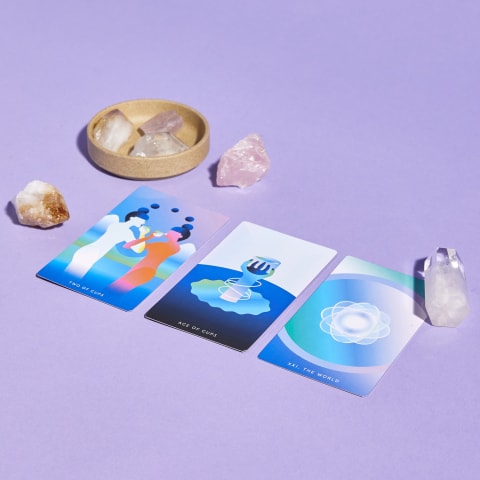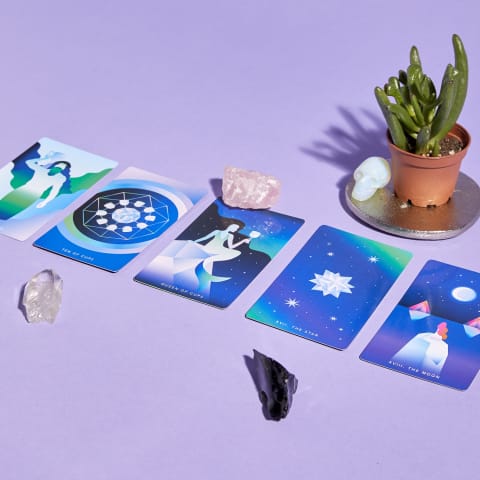Here’s what you need to know about finding the right tarot deck, pulling cards, and deciphering their useful messages. Today, both tarot and oracle cards, which have fewer rules and a wider range of content, are still in heavy rotation among modern mystics (or anyone looking for a sneak peek into the future). The enlightened soul searcher has his or her pick of playing cards these days, with traditional decks like the Rider-Waite deck, first published in 1909, and any number of cool and creative decks that appeal to the individual. The trick to finding the right deck? It’s simple—opt for one that really speaks to you. The standard tarot deck has 78 cards, and each one has its own imagery and symbolism. The cards are split into two categories: 22 Major Arcana cards and 56 Minor Arcana cards. Here’s a quick lowdown on each, but you can find a more thorough explainer of the 78 tarot cards here: A Major Arcana card is often complex and significant, and its appearance will influence the entire reading. It’s often a prompt to reflect on your life’s broader lessons and overall themes. They represent our thoughts, feelings, experiences, and beliefs. These cards are associated with a temporary kind of energy that’s affecting your life at the moment and could be easily influenced one way or another. The Minor Arcana cards are made up of four tarot suits that focus on different parts of our lives: Grab the deck you’d like to work with (making sure it’s freshly cleansed). From there, tarot readings generally follow a simple format: The idea is to use the card reading to illuminate a path forward, so the tarot reader should ask questions that are broader. Here are a few frameworks to consider if you’re new to tarot: You can also “cut” the deck by dividing it into several piles and then combining them into one again. Or you can try spreading the cards facedown on the table and sweeping them into a big, messy pile before tapping them into place again. There’s no right or wrong way to do it: Give all these techniques a try, and see what feels right. Or, you can fan the cards out like poker, and choose the card that draws your eye or feels right in your hand. You’re free to pull a single card for a simple reading or several cards for what’s known as a spread. Instead of answering one question, tarot spreads can speak more broadly to your situation or life path. The more cards you use in a spread, the more in-depth the reading tends to be, but a big spread can be overwhelming for beginners. Incorporating tarot into a daily, weekly, or monthly practice, or simply on an as-needed basis, will help you grow your intuitive abilities and tap into some of that inner wisdom we all have. You can start reading tarot cards more consistently by drawing a card every morning when you wake up (or in the evenings before bed) that speaks to what you need to know about the day to come. Think of it as an especially rewarding form of self-care that has the added benefit of helping you manifest a better, brighter future.





